

Manufactured Gas
Methods for synthesizing combustible gas by heating carbonaceous materials were known by the late 18th century. In 1792, William Murdock, a Scottish engineer and inventor, delivered the gas he created from distilling coal through 70 feet of pipe to light his home. There was some fear of this new gas, but his development of satisfactory burners for illumination showed promise in a time when mostly candles and oil lamps supplied lighting.
In 1807, London became the first city to use "coal gas" for gas lights. In 1807, Baltimore became the first city in the US to start a gas company and was illuminating by 1816. Boston first lit its street lamps with coal gas
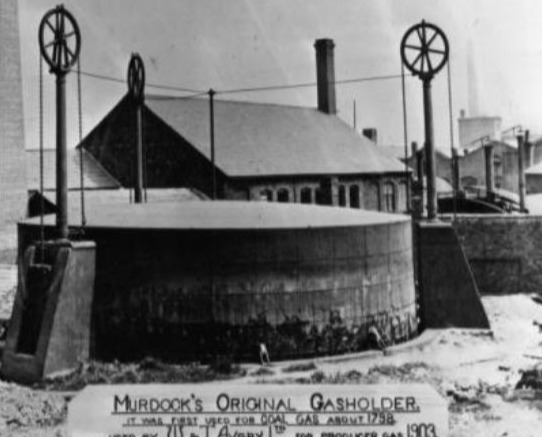
in 1829 and New York City in 1825. Gas lighting appeared in New Orleans in 1833, Philadelphia and Pittsburgh in 1836. San Francisco, far away from the coal mines in the East, imported coal to gasify from Australia starting in 1854.
By the mid 19th century, almost all cities, moderate to large towns and even some smaller towns were equipped with coal gas plants. By this point, coal gas fired ranges and water heaters were also available.
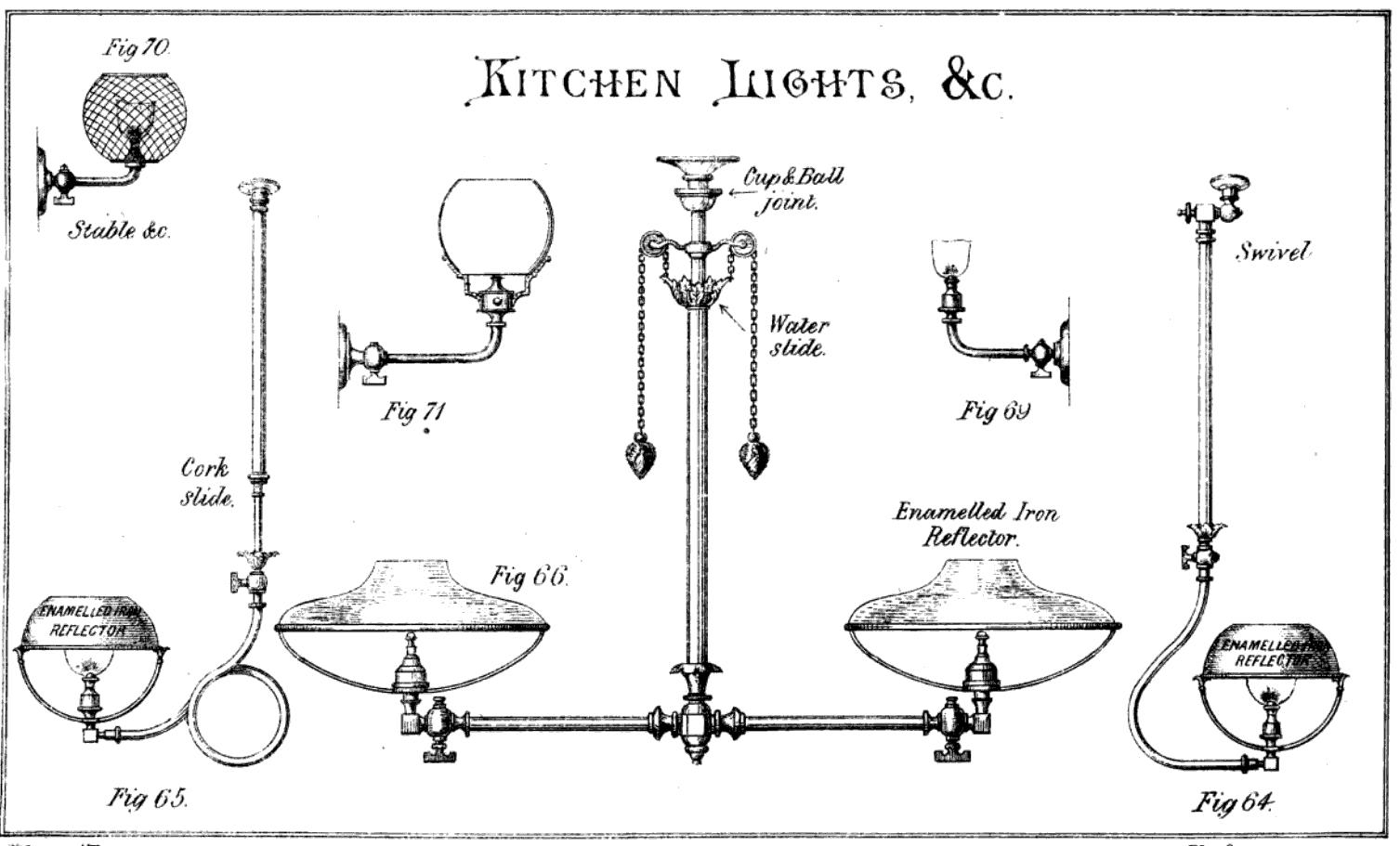
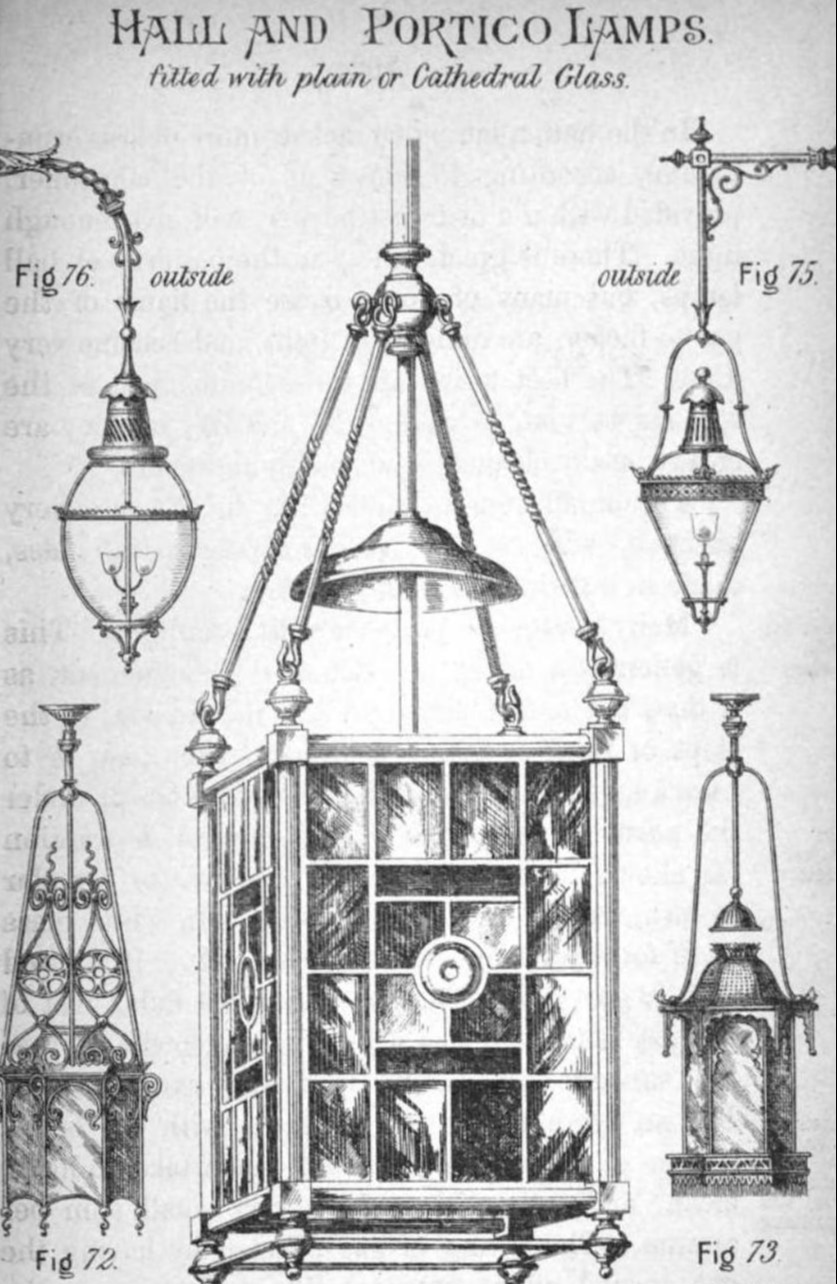
Outside of the Towns and Cities
It wouldn't be cost effective to manufacture gas from coal and pipe it out to rural areas - just like fiber optic cable was never and will never be extended to where I live. I've found evidence of a few small scale coal gas plants but these were for supplying several buildings on very large estates, luxury vacation resorts and isolated sanitoriums. There were however, some small scale gas machines available that could be used in rural areas, even in modest homes and buildings. But they weren't fed coal.
Gasoline doesn't burn but the vapor sure does. And, that flammable vapor can travel long distances. That's why I don't store gas cans anywhere near an open flame. Before electricity made it out to rural homesteads, machines could be purchased and installed for lighting, cooking and heating water with this flammable vapor. Gasoline is vaporized in a cool underground tank, then mixed with the correct amount of air in a drum in the basement. The vapor is then distributed throughout the home in the same piping configurations as in cities. A weight on a rope and pulley, wound up to start, would operate the blower mechanism for many hours.
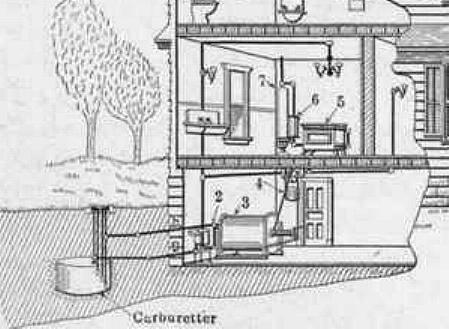
In 1862, it was discovered that when calcium carbide decomposes in water it produces a flammable gas, called acetylene. In the early 1890s, calcium carbide was being commercially produced, after the invention of the electric furnace. Coke and limestone are heated in the electric furnace to
create calcium carbide (CaC2).
Self-contained devices were developed that generated and stored acetylene by either dropped pellets of calcium carbide into water, or dripped water onto the calcium carbide. The gas was then captured in a “bell” that would rise and fall with the volume of gas. The gas was then slightly pressurized and piped into the building. There is a possibility of explosion - probably why I usually find these acetylene generators installed underground.
One pound of calcium carbide could produce about 4.5 cubic feet of acetylene, making it cheaper to fuel lighting than oil, kerosene or even “town gas”. It also creates a brilliant white light, much brighter than with the other fuels available.
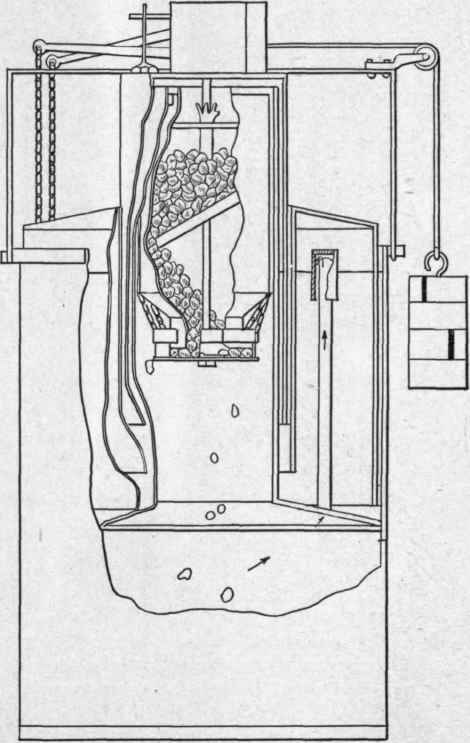

Bill Kibbel is a consultant and an inspector of historic homes
& commercial buildings at Heritage Building Inspections.
Sin
This web page was created with Mobirise template